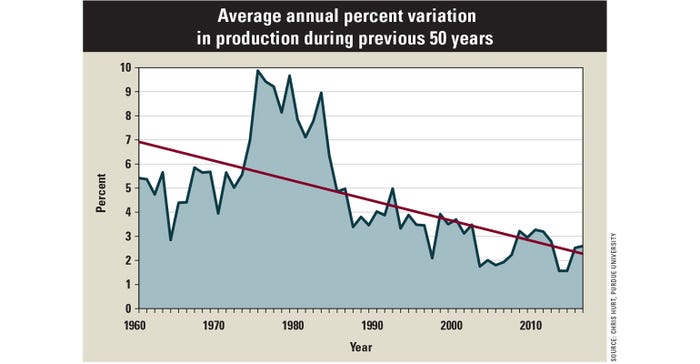March 28, 2017

By Chris Hurt
Once upon a time, hogs were primarily raised in barn lots or pastures on small family farms, sometimes with A-frame hog farrowing huts. The primary investment in raising hogs was the cost of the breeding stock, the farm’s own corn and family labor.
Since the fixed investment in buildings and equipment was low, it was easy for families to “get in” or “get out” of the hog business. Some farm families would try to time the hog cycle. That’s to say they would sell their breeding stock when hog prices were high, and then buy back breeding stock when prices were low. The term commonly used for farms following this strategy was “in-and-outers.”
Changing times
In the 1960s and 1970s, hogs were moved inside into confinement systems. Those systems lasted another generation until the 1990s and into the 2000s. Then we witnessed the advent of the modern, industrialized production systems.
The march from small pasture systems to our modern industrialized system has involved huge investments of money in buildings, equipment, technology and management skills. In contrast to the old pasture systems, fixed investments are large. A critical cost strategy is to achieve maximum throughput to lower fixed costs per hundredweight of pork produced.
One of the positive results of this transition has been a much more stable pork industry. The chart below measures the average year-to-year variation in U.S. pork production for the previous five decades. In the 1960s, the average annual variability in pork production was about 5% per year.
Average annual variability exploded in the 1970s and 1980s as grain prices went through their boom-bust cycle. Average annual production variability reached as high as 10% a year as hog production first dropped with high feed prices in the 1970s and then sharply recovered with much lower feed prices in the 1980s.
Annual variability in pork production has continued to trend lower since the 1980s as fixed investments have increased. Today the variability has dropped to about 2.5% a year. In addition, the recent cycles in profitability, modernization and feed prices did not result in as wide of swings in pork production as in the 1970s and 1980s.
Stability matters
There are important advantages of a more stable industry. The most important of those is a much more stable flow of pork products to our consumers across the globe.
The second advantage is to drive costs lower, as high fixed-cost industries must strive for maximum throughput. A third plus is to reduce idle capacity in the use of buildings, equipment, technology and management in the total pork system.
Finally, lower variability means producers and processors must be closely coordinated to keep wholesome, nutritious pork continuously moving to consumers. That’s a good thing.
Hurt is a Purdue University Extension agricultural economist.

You May Also Like




